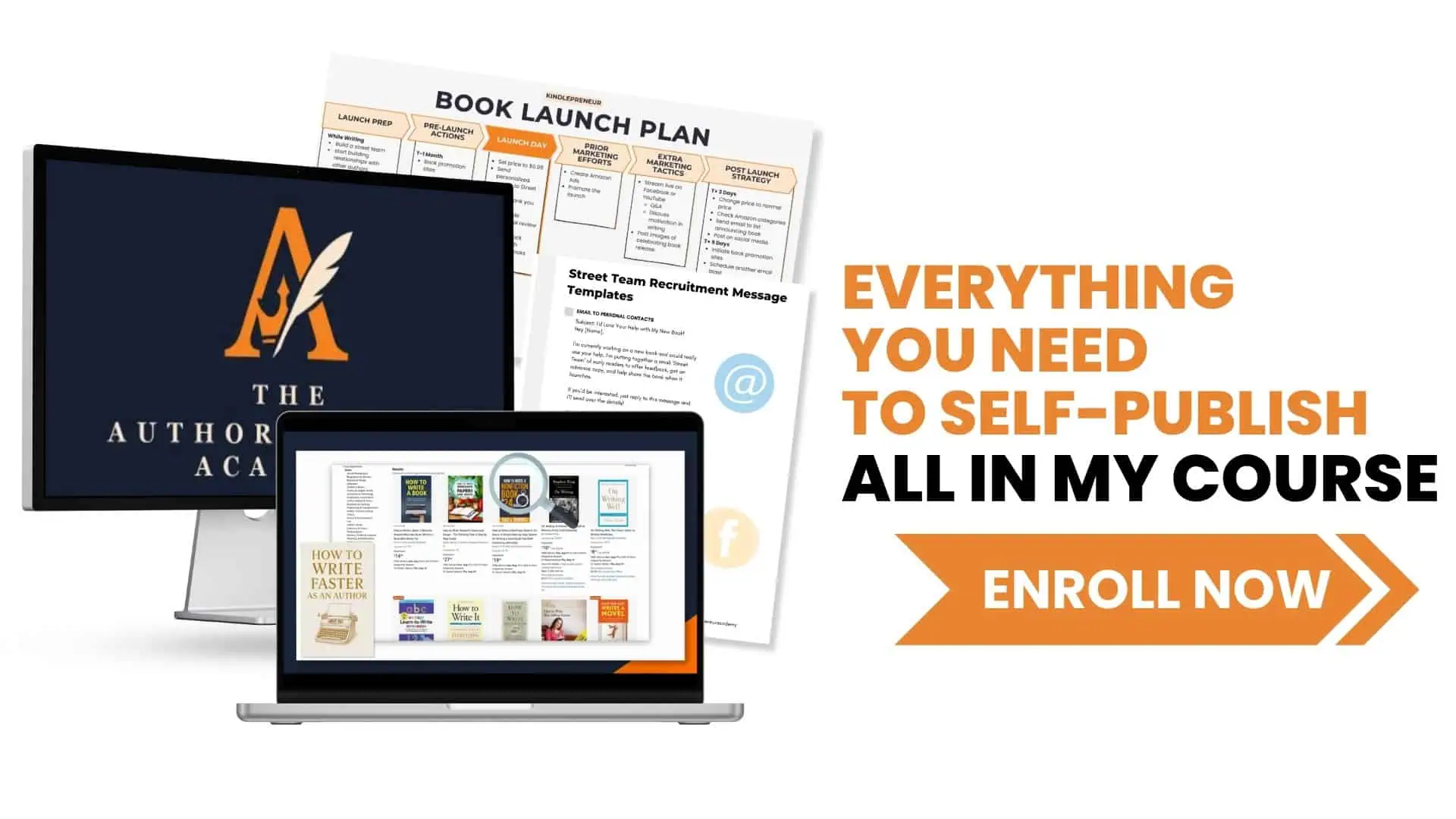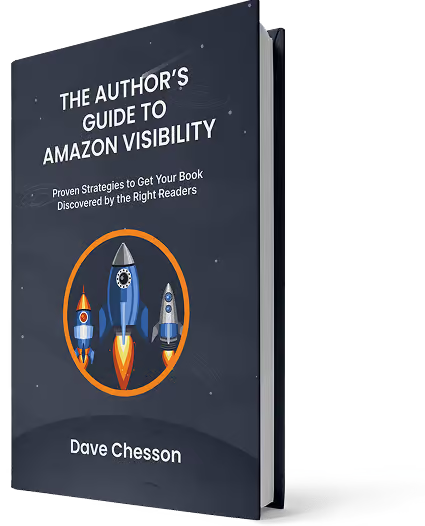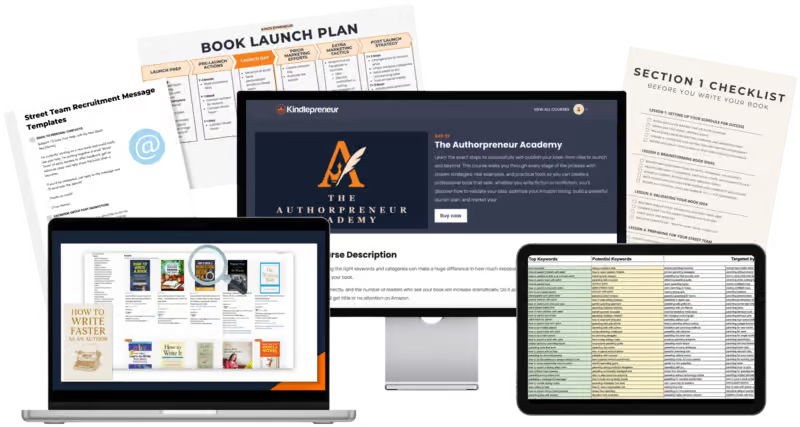Writing and publishing a memoir can feel overwhelming.
After releasing several books of my own and guiding dozens of clients, I’ve seen that the real trouble comes when you don’t have a clear plan. You charge ahead, only to discover halfway through that you’ve been moving in circles—and then you’re forced to backtrack.
These 19 steps won’t make the process effortless, but they will help you avoid the wrong turns that slowed me down for years.
Here’s what we’ll cover:
- The crucial move to make before you start typing
- How self-publishing and traditional publishing differ in practice
- A trap that catches many self-published memoir writers
- What goes into a launch that actually connects with readers
Step 1: Determine Your Message
This may sound obvious, but many writers skip it. I published six books with HarperCollins before I ever stopped to think about my message. A message isn’t the same as your story, your plot, or your elevator pitch. It’s the takeaway you want readers to carry with them.
For example: “It’s important to share your story so you can release your shame” is a message. “It’s about how I went from struggling addict to thriving writer” is not.
Step 2: Determine Your Why
At some point, the process will get rough. It doesn’t matter how talented you are or how strong your story feels—you’ll hit walls.
That’s when you’ll need fuel to keep going, and no, I don’t mean a sleeve of Oreos.
Your “why” is that fuel. Maybe you want this book to launch a speaking career or lay the groundwork for a consulting business. Maybe your only goal is to help readers avoid the pain you went through.
Whatever your reason, nail it down before you start. A clear purpose is what will carry you through when everything feels heavier than you expected.
Step 3: Um, Write!
This one should go without saying, but I meet plenty of people who are “working on books” without actually writing a book.
I don’t buy writer’s block as an excuse. Accountants don’t get to wake up uninspired and claim “accountant’s block.”
If you call yourself a writer, you write. Some days it’ll be rough and the words will stink. That’s fine. That’s why Step 6 exists.
Step 4: Educate Yourself About Publishing
A lot of writers picture a Big Five publisher scooping up their book and sending them on a national tour. For most, that fantasy ends quickly. Only a tiny fraction of book proposals ever sell to the majors—and that’s from authors who already have agents.
Here’s the hard truth: traditional publishers want sure bets.
That usually means established authors with strong sales records or newcomers who bring big platforms—a large mailing list, a strong social following, or both. Don’t take it personally. Publishers aren’t in the business of gambling.
If no one knows your name, the odds of readers rushing to buy your book shrink fast.
Step 5: Come Up With Your Title
Titles work like book covers—they set expectations before anyone reads a word.
My debut, Party Girl, was brushed off by some critics as chick lit. I still wonder if it would have been received differently under the alternate title HarperCollins briefly floated: The After Party.
When you’re choosing, remember this: clarity beats cleverness. A title no one understands is a title no one picks up.
Step 6: Rewrite
Hemingway said, “Writing is rewriting.” He wasn’t exaggerating—though if anything, he undersold it. Writing is rewriting…and then rewriting again.
I think of it like clay on a potter’s wheel. The first draft is the lump you drop on the table. Revision is the shaping—the smoothing, refining, and carving until it resembles something worth keeping.
Want proof it matters? Frank McCourt spent years rewriting Angela’s Ashes. The book eventually won the Pulitzer and became a worldwide bestseller, but only because he was willing to tear it apart and rebuild it until the story sang.
Step 7: Have Your Book Edited
You cannot edit your own book. Trust me, I tried.
I figured since I was a professional writer and editor, I could handle it myself. The result? Copies I had to recall and redo—after hiring a real editor to fix what I’d missed.
Your editor shouldn’t be a friend who once took a journalism class. It should be someone who edits for a living. Treat this hire seriously. An editor is your co-pilot, and you need to be clear about the role they’re playing.
A memoir usually needs three types of editing:
- Developmental editing for structure and big-picture issues
- Copy editing for grammar, clarity, and consistency
- Proofreading for catching anything the copy editor didn’t
Rates vary from hundreds to thousands, and you really do get what you pay for. If an editor can’t provide references or samples, ask for a trial edit of a chapter before committing.
Step 8: Consider Potential Legal Issues
Worried about someone stealing your work? Copyright your book.
But that’s only the beginning. Memoirs can stir up strong reactions, and in today’s world, it’s smart to play safe.
If you suspect anyone in your story might object to how they’re portrayed, take precautions:
- Add a disclaimer at the front of your book
- Change names and identifying details
- When in doubt, have a lawyer review the sections in question
And the safest path of all? Show the person those pages before you publish. It won’t always be easy, but it can prevent headaches later.
Step 9: Write Your Dedication & Acknowledgments
A dedication isn’t required, but most memoirs have one. Think of it as a note to the person (or people) you’re really writing for.
Acknowledgments go further. They’re where you thank everyone who supported you—early readers, designers, mentors, friends, and the partner who kept you going when you wanted to quit. You can also include people who shaped your life long before you sat down to write.
Just keep an eye on length.
When I thanked half of Los Angeles (plus a snack from Trader Joe’s) in Party Girl, a magazine poked fun at me.
Point taken. Gratitude is wonderful. Overdoing it is less so.
Step 10: Gather Endorsements
Endorsements are those glowing blurbs famous names sprinkle on book covers.
They look nice and provide social proof, but let’s be honest—have you ever bought a book just because of who endorsed it? Probably not.
So don’t burn energy chasing big names. If you know them, save that favor for book promotion later. I used to collect dozens of endorsements from high-profile people, and now? I usually get one solid blurb from a respected author for the back cover and call it a day.
Remember: asking for an endorsement is a big ask.
I used to assume people would be as thrilled about my book as I was—wrong. If you’re reaching out to someone you don’t know, you’ll need to make an airtight case for why your book is a perfect fit for them.
Step 11: Come Up With Your Price
Pricing a memoir can feel like throwing darts blindfolded. Genre authors often offer free books to draw readers into a series, but memoirs don’t work that way.
What I’ve found works best: set your ebook at $0.99 for pre-orders. That early low price helps generate reviews and momentum. After launch, bump it to $9.95.
For paperbacks, aim between $12.95 and $15.95. That’s the sweet spot where most memoirs sell.
Step 12: Get an ISBN
ISBN stands for International Standard Book Number, the unique ID your book needs. Each format—paperback, ebook, hardcover—requires its own number.
In the U.S., you buy them from Bowker (here's a Kindlepreneur article that walks you through the ISBN process).
Prices drop when you buy in bulk: $125 for one, $295 for ten, and $575 for a hundred.
Amazon does hand out free ISBNs if you publish only on their platform, but I recommend owning yours. That way, you can distribute more widely—Apple Books, Nook, and beyond.
Once you’ve got an ISBN, converting it into a barcode for your paperback is quick and easy if you use Kindlepreneur's free ISBN bar code generator tool.
Step 13: Have Your Cover Designed and Your Book Formatted
There’s no shortage of advice out there on cover design, but here’s what experience has taught me: hire a designer.
I’ve tinkered with free templates and even got compliments on a Canva cover once, but nothing compares to working with a professional who knows your style and can create a consistent look across all your books.
As for book formatting, I’ve tried Vellum. It only runs on Macs, unless you use a workaround like MacInCloud. On one project, Vellum kept flipping my headers into chapters and my chapters into headers, and after wrestling with it far too long, I gave in and hired a designer. Best decision I could’ve made.
Editor's Note:
I'd be remiss if I didn't point out that Atticus is a great alternative to Vellum (and costs far less than hiring a designer).
And, unlike Vellum, it runs on Windows, Mac, Linux, and Chromebooks.
Step 14: Decide Whether You're Going to Make a Hardcover
I usually advise clients to skip hardcovers. Here’s why: my printer charges $11 per copy and needs six weeks to deliver them. Paperbacks, by contrast, cost about $4 and can be ready in just a few days. From a business standpoint, paperbacks make more sense.
That said, hardcovers have undeniable appeal. They feel substantial, they look impressive, and some readers love them. Which is why plenty of my clients ignore my advice and publish hardcovers anyway.
Step 15: Decide if You're Going to Do an Audiobook
Audiobooks aren’t optional anymore. They’re booming, and they bring in readers who may never touch a paperback or ebook.
Ideally, you release the audio version at the same time as the print and digital editions. But even if you don’t, there’s opportunity.
Several of our clients have launched the audiobook months later and used it as a second wave of promotion. That extra launch moment can give your memoir new life.
Step 16: Set Yourself Up for Success on Amazon
Amazon may feel like a mystery box, but there are two levers you can pull that make a real difference.
The first is keyword research. Tools like Publisher Rocket can help you find search terms readers are already using—and that’s half the battle when it comes to visibility.
The second lever is categories. Today, Amazon lets you pick three categories when you publish via KDP. You used to be able to ask Amazon to list your book in up to ten, but that’s been phased out.
That means you have three chances (not ten) to land in a “#1 spot” category. Those slots are precious, so you’ll want to use them strategically.
Step 17: Gather an Advanced Reader Team
An Advanced Reader Team (often called a “street team”) is exactly what it sounds like—a group of people who read your book before launch and help spread the word.
Here’s a simple way to do it: upload your book to BookFunnel about a month before release. Send your team a link so they can read it, and ask them to prepare a review. When your ebook goes live, price it at $0.99, then email the team asking them to buy a copy and paste in the review they already wrote. This gives you verified reviews right out of the gate.
Keep in mind:
- You cannot pay for reviews (Amazon will come after you if you try).
- You cannot require positive reviews.
- Close friends and family are off-limits (Amazon deletes anything it thinks is biased).
- The best reviewers are readers who’ve bought books similar to yours. That’s how you land in Amazon’s “Customers Who Bought This Also Bought” sidebar.
Step 18: Launch
This is the moment you’ve been waiting for. But take it from me: a launch is more enjoyable when you focus less on Amazon rankings and more on reaching real readers.
I learned this the hard way.
My early launches were miserable—constant number-checking, disappointment when the press didn’t bite, endless “So how’s the book doing?” conversations. I had major media hits (The Today Show, Fox News, Cosmo, The New York Post), and yet none of it translated to sales.
What does sell?
Building an audience that cares about you and your topic—and serving them well.
These days, I encourage authors to treat a launch as an experiment. Some of the strategies I’ve used (and seen others use) include:
- Creating a sales page that spells out the reader benefit
- Running Facebook ads tied to a free sample (like the first three chapters)
- Contacting book bloggers in your niche
- Expanding your Advanced Reader Team beyond friends and followers
- Offering fun branded extras — shirts, bookmarks, even digital freebies
- Hosting an online launch party
At one point, I even hired a social media agency—not because I thought it would make me rich, but because I wanted to test what worked so I could pass the lessons on to others.
That’s the mindset I recommend: experiment, learn, and keep what clicks.
Step 19: Keep Promoting…Forever
A book isn’t a one-week project. It’s a legacy. When I was publishing a book a year with HarperCollins, I’d launch one, then abandon it to start the next. Looking back, that was a mistake.
Think of it like this: you wouldn’t bring a child into the world and then leave them to fend for themselves. You’d keep nurturing them.
Do the same with your book. Promotion isn’t something to feel embarrassed about—it’s part of honoring the work you put in.
If you believe your message matters, it’s not self-indulgent to keep sharing it. It’s a responsibility.
Final Thoughts on Publishing Your Memoir
A memoir is more than a stack of pages. It’s a way of turning lived experience into something clear, honest, and lasting.
These 19 steps won’t make the work effortless, but they will save you from wasted detours and help you move forward with purpose.
Your role isn’t only to write chapters. It’s to decide what message readers should carry with them, to gather the right team, and to give your book the best chance of finding its audience. Publishing doesn’t end when you hit “upload.” That’s the beginning of a new relationship between your story and the people who need it.
Take the next step. Page by page, choice by choice, you’re creating more than a book—you’re building a legacy.





